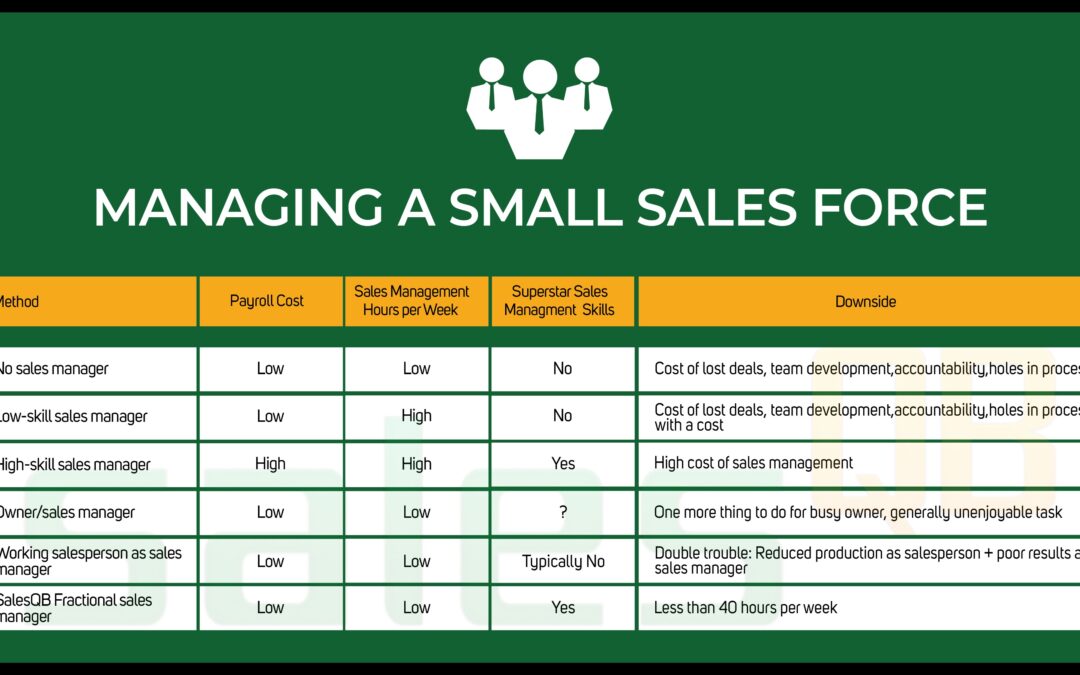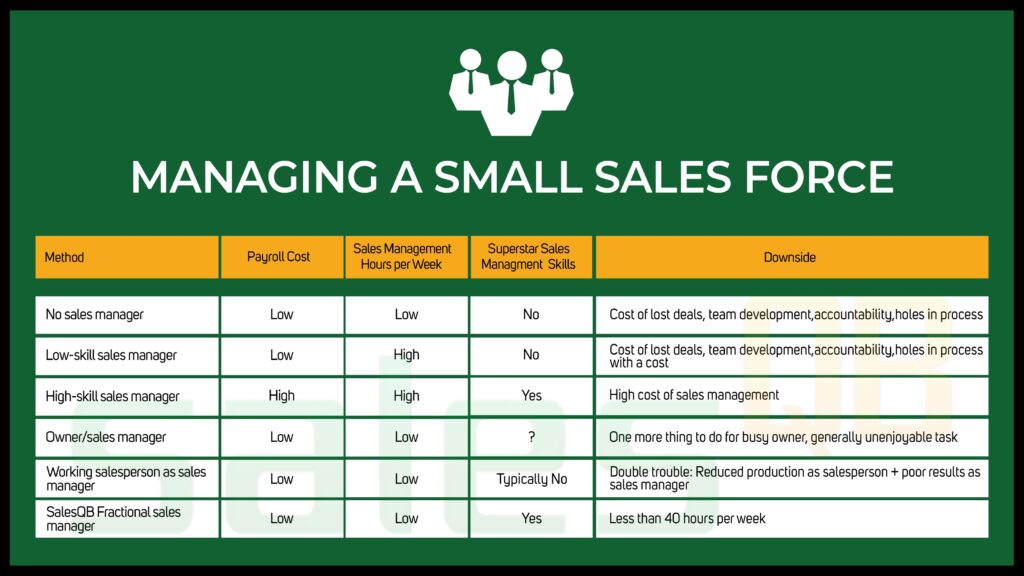There’s no perfect method to manage a small sales team. Technically, having a small team is a diseconomy of scale. There are not enough salespeople to afford a great full-time sales leader. So what do you do when your sales team is too small to cost-justify executive-level talent?
The chart below shows the five common ways businesses work around this diseconomy of scale. As you can imagine, none of them work perfectly because they are workarounds to the real problem, the diseconomy of scale.
If you break down what you get in a star sales executive, it is time and talent, but it comes at a high cost. Each of these elements plays into the results you will get from your sales department. Overpay the sales leader, and it can drain profits. Hire someone without the requisite talent, and they won’t “move the needle.”
Below are the six ways to manage a small sales team, along with a link more detailed analysis of each option.
- Option 1: No sales manager – Low cost, lost deals
- Option 2: Owner-managed sales team – Low hard cost, high soft cost due to the owner sacrificing other, more important, work to manage the team.
- Option 3: High-caliber sales leader – High cost, high results
- Option 4: Inexpensive sales leader – Don’t bother. This option is nothing more than a sales babysitter. Most companies need more.
- Option 5: Salesperson promoted to sales leader or dual roles. Seems low cost, but it isn’t. Double don’t bother. This is a trainwreck in the making.
- Option 6: Fractional sales leader. Reasonable cost, good results, but short of full-time star sales leader.
It pays for CEOs to identify the soft costs and opportunity costs of leaving the sales department unattended. It’s easy to see the hard cost savings of not having a sales leader, but for most companies, the loss of opportunities in additional sales greatly outweighs the cost of running the department properly.




